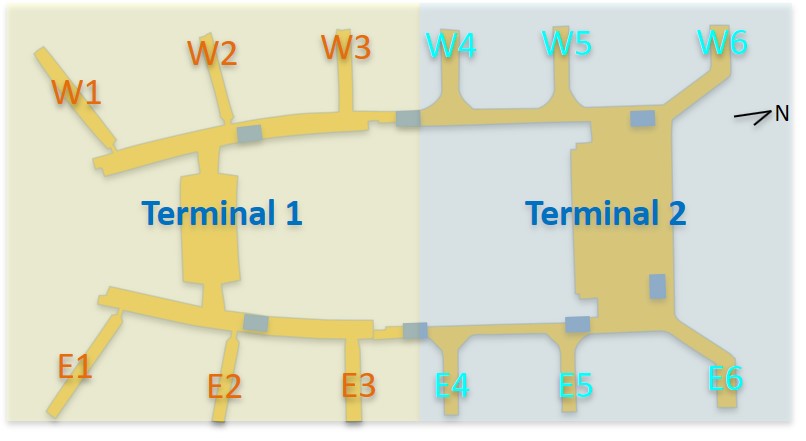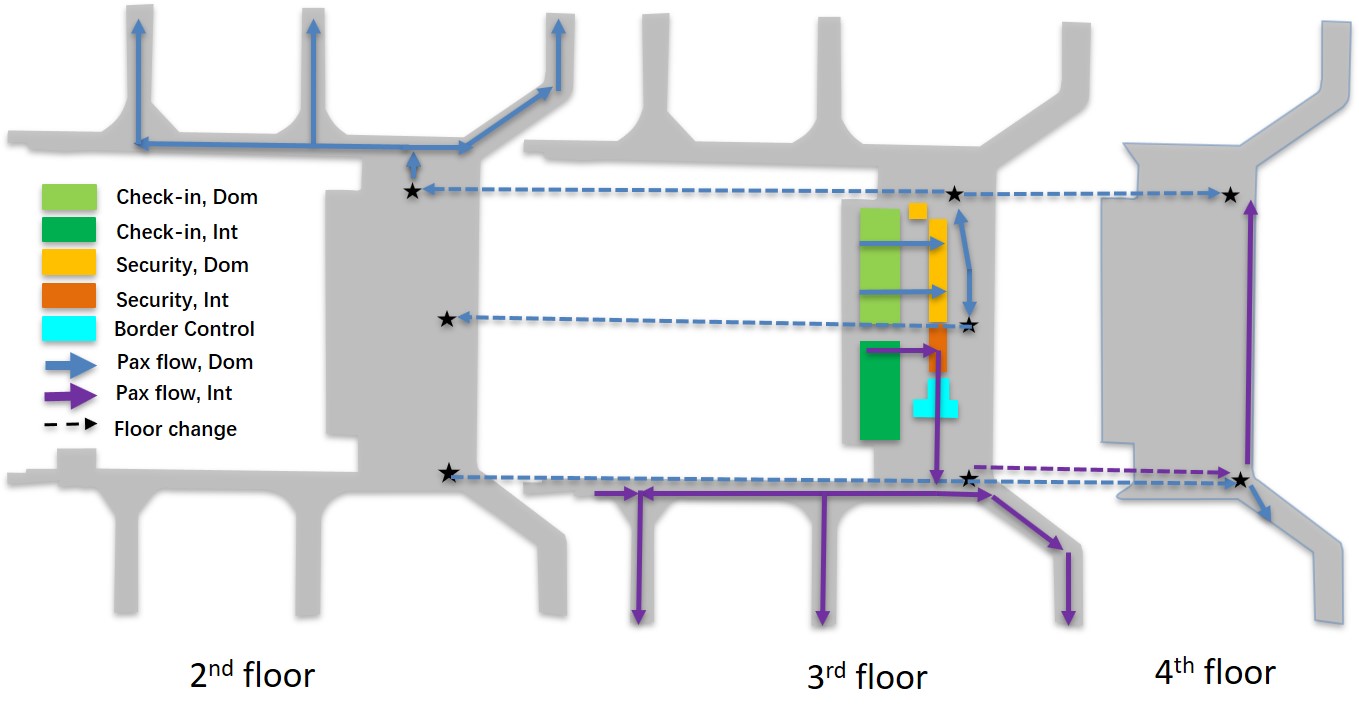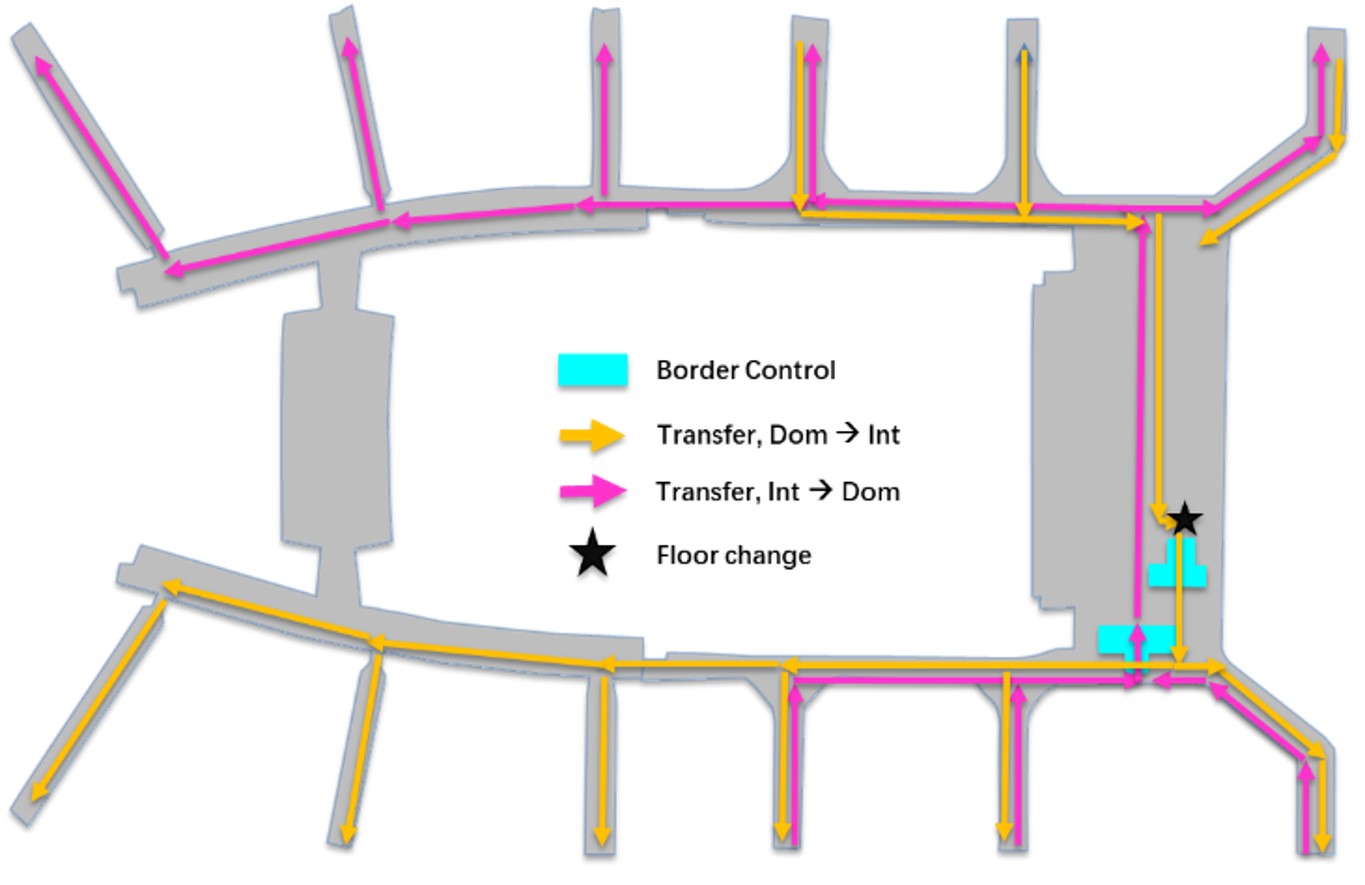The airport industry has seen a dramatic increase of passenger traffic in the past decades, and the growth is expected to be back on track after the COVID pandemic. Greater terminal buildings have been built, while leaving facilities spread over larger areas and making the terminal processes less walkable. Together with this, the prevalence of multi-terminal system further adds to this problem at large airports, undermining the airport efficiency and Level of Service (LoS) of passenger moving. To offset the side effect, the Automated People Mover System (APM) has been introduced in many airports. This time, our team was tasked to support the APM planning of a Chinese airport, to evaluate the design capacity and efficiency using Fast-time Simulation (FTS).
Background
According to the airport’s master plan, the T1 and T2 are expected to handle 100 million passengers per annum. The planning concept arranges a central processing area for international traffic, and groups airlines based on the alliance for the allocation of piers. The configuration of the terminal area with 6 piers on each side (see fig 1) will inevitably lead to a very-long distance for passenger to walk. For example, it is about 1.3km from T2 entrance to the furthest gate. Furthermore, traffic forecast shows a considerable portion of transfer, making it unacceptable for many transfer passengers walking between the pier ends. Therefore, the airport plans to build an airside APM system to facilitate passengers.

The planned APM system includes two routes: the domestic route in the west and the international route in the east, serving domestic and international passengers respectively. There are 4 stops on the west line and 3 stops on the east line, with the headway of 3 minutes.
Findings
Based on the replica of the terminal system, the team conducted an evaluation of the APM design from the two dimensions of capacity and efficiency by comparing the simulation results of scenarios with different APM usage rule. Here are the main findings.
Capacity
In the scenario where the APM is used for all departing, arriving, and transit and transfer, the design capacity could meet the demand well.
On the premise of ensuring the average waiting time complies with the target LoS criteria, the maximum passenger number in the middle station on the east side (international side) is about 150~160, while the number on the west side (domestic side) is about 200~220. The APM load factor is around 50% and 70% respectively.
Efficiency
The efficiency is assessed mainly by the walking time saved with the assistance of APM.
When serving passengers in T2 (see fig 2), APM could save about 1/3 of walking duration (2min) for international passengers and 1/2 of walking duration (6.7min) for domestic passengers on average. The west line saves more waking time compared to the east line as the former route has a longer distance.

When serving international-transfer (international-to-domestic or domestic-to-international, see fig 3) passengers in T2, APM might reduce the walking duration by 10~16 minutes, about 1/3 of the total transfer time spent without APM.
When serving those passengers transferring between T1 and T2 (see fig 3), 16~20 minutes could be saved, significantly contributing to reduction of the MCT and improving the transfer efficiency.

Conclusions
The planned APM is proved to be a key contributor to optimising the MCT and improving the passengers’ transfer process. Given the passenger volume forecast, the design capacity of the domestic route could meet the peak hour demand well while the international route might be kind of over-design.
Since implementing an APM is complex and the infrastructure and equipment are expensive, the concept of phased construction could be adopted. Taking the recovery progress of the domestic and international aviation market into consideration, it was suggested the priority shall be given to the construction of the “L” line (domestic side). Also, optimising the capacity configuration to enhance the facility utilization on the premise of maintaining target LoS is recommended.


Hi Chao:
Congratulations for the great report. Please, could you share the technical feasibility study of the APM system at the chinese airport. What type of software do you use for fast-time simulation. Many thanks.